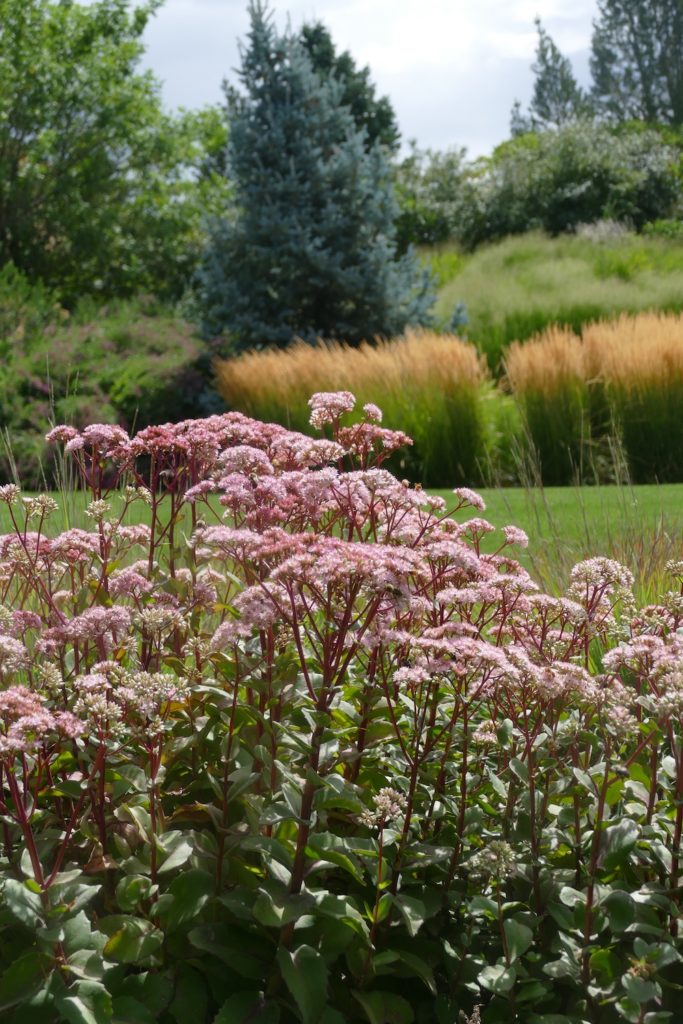Garden travel is good for the soul, to revise an old saying. And, for gardeners from—how shall we put this?—more restrictive climates, travel that let’s us see what gardeners elsewhere grow and what they deal with helps us put the limitations we have in perspective.

Earlier this fall, I visited gardens around Salt Lake City, Utah, with GardenComm, the organization of garden communicators. We had some wonderful tours of public and private gardens in the area, and one of the highlights was Red Butte Garden, the botanical garden of the University of Utah. This was not on any of the structured tours I took, but on the advice of Minnesota photographer Bill Johnson I went on my own to see this remarkable garden. I’m glad I did.

First a word about the climate of Salt Lake City: The city is 4,200 feet above sea level and is located in a valley near the Great Salt Lake. Depending on whether you are on the mountains or in the valley, the USDA Hardiness Zones can vary from 4b (that’s us here in southern Minnesota) to 7a, according to one of the local garden writers. That’s a lot of microclimates. Average rainfall is only about 12 inches and most of that comes between late fall and April. Salt Lake has a distinct winter season, though not nearly as cold as ours, and a blazing hot summer. If you see lawn or other turf in Salt Lake City, you know it is irrigated.
Plants and Collections
Given that climate, I was not shocked to see many ornamental grasses and plants we think of as drought tolerant in Red Butte Garden. The designers also selected some areas for heavier irrigation and they have beautiful displays of annuals among the beds. The garden features several collections, including roses, conifers, ornamental grasses, lilacs and penstemons. Penstemon (commonly known as beardtongue) is one of my favorite early summer flowers—a bright light in June in Minnesota. Penstemon species are native throughout the continental United States and Alaska, but Utah boasts more than 100 native species. Beardtongues are tough plants, and can handle a variety of climates and weather including drought. They attract pollinators in droves no matter where you plant them!

Because it was late summer, the grasses looked lush and golden in the hard afternoon sun at Red Butte. Some were planted with other drought tolerant plants, such as sedum. (I think that is Matrona in the photo.)
Despite the warm temps and a bright sun, I couldn’t resist walking through most of the Water Conservation Garden, a 3-acre site filled with ideas for growing plants that adapt to local conditions in Utah. It features a rain garden, a drought-tolerant mixed border that had the feel of an English Garden and a section that showed how to use groundcovers as mulch.
Red Butte was a wonderful garden to walk around in with lots of different plants and ideas and enough shaded sections to make it pleasant. I especially enjoyed seeing the pear trees full of fruit, the fall-blooming roses and the medicinal garden. As you can see below, the garden designers at Red Butte create stunning vignettes using shrubs, trees, annuals and perennials. I especially like how the large swathes of red and orange work together.

The Joys of Limitations
As lovely as Red Butte Garden was, I will admit I came out grateful that our northern garden climate features more rain—this year, much, much more. Every region has its limitations and its assets. Many southern gardeners wish they could grow peonies, for example. I’ve always thought crepe myrtles were wonderful trees — though some of my southern gardening friends are incredulous as to why. Dry climates, like Salt Lake or the ones I’ve seen in Austin, TX, and elsewhere, can grow beautiful cacti and unusual conifers. And, those Salt Lake City folks do have great big mountains everywhere they look! That’s a real asset to any garden view.
There’s some psychological research that argues that constraints make us more creative. Having too many options, too many choices, too much freedom can immobilize people as anyone who has clicked around the 300 channels on cable television and found nothing knows. The limitations of climate, soil, sun or shade exposure and other factors in gardening are jumping off points for our creativity. Visiting other gardens provides inspiration and ideas but never a prescription.
If you visit Salt Lake City, the garden is adjacent to the campus of the University of Utah. It’s also right next to the Natural History Museum of Utah, which has an amazing display of dinosaur bones and geological exhibits. It also has a nice coffee shop, if you need a break after touring the gardens.
Where are you garden travels taking you?
Every climate has limitations. Gardeners in Great Britain, which is often considered to have a “perfect” climate, have trouble getting tomatoes to ripen. Like you, I’m also thankful I don’t need an irrigation system or deal with grueling heat all summer. I’m always disappointed when I read “Hardy to zone 6 (or higher)” about a plant that intrigues me, but I’ve learned to glory in the plants I grow and appreciate each season in turn.